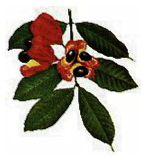Damian Cohall, Contributor

THE CONTROVERSIAL ackee situation with which we are once again faced has left a lot of concerns about the consumption of the fruit. It just seems that our nation's produce is always under the selective eye of the world. Be it in sports, our music, and now our food!
Ackee, usually consumed in our national dish and also other food preparations, is a high-fat fruit with a natural toxin, hypoglycin A in its unripened state. The level of this toxin decreases as the fruit matures and is thought to be minimal in its naturally ripened state. Hypoglycin A is a non-protein amino acid and upon maturation of the fruit, it migrates from the fleshy portion of the fruit to the seed. It combines with another amino-acid called glutamic acid to form hypoglycin B which does not pose a health hazard. The toxin reduces blood sugar and might affect very young and old individuals who are malnourished. There are even speculations that derivatives of the hypoglycin A may be useful in the near future for the treatment of diabetes.
FOCUS ON PROCESSED FRUIT
A lot of the focus of late in the media has been targeted at the processed fruit. But, is this product as dangerous as the media casts it? There are laws and standards that govern the proper processing of this product and if adhered to, the product should be safe.
Mature ackees, i.e. just at the point of opening, are harvested and racked for two to three days for opening. Ackees are taken from the opened pods and cleaned by the removal of the seeds and raphes (red material found in the fruit). The fruit is processed by a high thermal processing in a two per cent brine solution. High thermal processing of the product will make it commercially sterile. Commercial sterilisation prevents the spoilage of the canned product and extends the shelf life of the fruit for up to two years for local and export markets.
The brine has dual purposes, it is bacteriostatic, i.e. it will assist with the prevention of bacterial growth and it also allows the water soluble hypoglycin A to diffuse from the fruit into its aqueous media during the processing. The brine in the can should be discarded when the can is opened and the fruits are prepared in whatever dish one caters for. A process similar to the cooking of ackee we pick from the trees or buy at the markets.
Jamaica has been canning ackees for over 50 years and available data suggest that the consumption of canned ackees is the safest way to eat the fruit. Our current concern should be to determine if the current allowable levels for the toxin in canned ackee is justifiable. What acute and chronic toxicology data support these limits?
Long live ackee! Let's be smart and help to defend our national fruit and its products.

